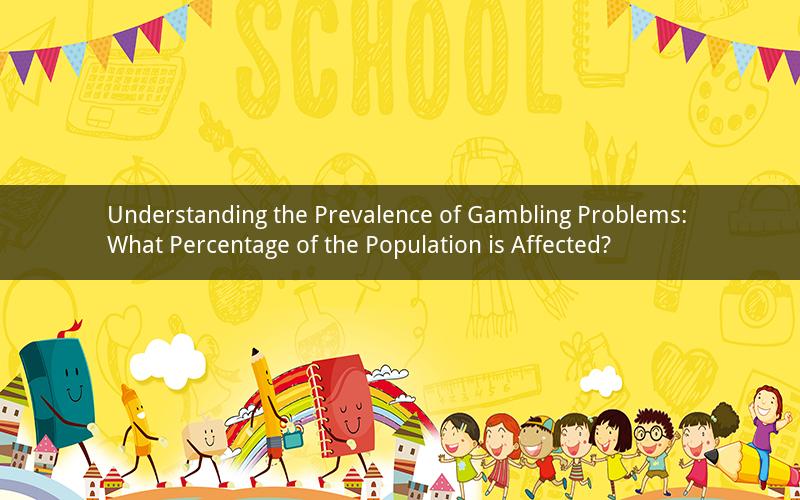
Introduction:
Gambling has long been a source of entertainment and leisure for many individuals around the world. However, it is important to recognize that not everyone who engages in gambling experiences negative consequences. This article aims to shed light on the percentage of people who have a problem with gambling, exploring the factors that contribute to gambling addiction and the potential consequences it can have on individuals and society.
1. What Percentage of People Have a Problem with Gambling?
The prevalence of gambling problems varies across different regions and populations. According to various studies, the percentage of individuals who have a gambling problem ranges from 1% to 5% of the general population. However, it is crucial to note that this percentage may be higher among specific groups, such as individuals with a history of mental health issues or those living in areas with higher access to gambling facilities.
2. Factors Contributing to Gambling Problems
Several factors can contribute to the development of gambling problems. These include:
a. Genetic predisposition: Research suggests that genetics play a role in gambling addiction, with individuals who have a family history of gambling problems being more susceptible to developing the disorder.
b. Psychological factors: Individuals who have low self-esteem, depression, or anxiety may be more prone to developing gambling problems as a means of coping with their emotional difficulties.
c. Social and environmental factors: Easy access to gambling facilities, exposure to gambling advertisements, and social pressure can increase the likelihood of developing a gambling problem.
3. The Consequences of Gambling Problems
Gambling problems can have severe consequences on individuals, their families, and society. Some of the common consequences include:
a. Financial difficulties: Individuals with gambling problems often experience significant financial losses, leading to debt, bankruptcy, and other financial crises.
b. Emotional and psychological issues: Gambling addiction can lead to feelings of guilt, shame, anxiety, and depression. It can also disrupt relationships, affect work performance, and hinder personal growth.
c. Legal and social problems: Individuals with gambling problems may engage in illegal activities to fund their gambling habits, leading to legal consequences. They may also face social isolation and exclusion from their communities.
4. Prevention and Intervention Strategies
To address the issue of gambling problems, several prevention and intervention strategies can be implemented:
a. Education and awareness: Raising awareness about the risks and consequences of gambling can help individuals make informed decisions and seek help if needed.
b. Treatment and support: Individuals with gambling problems can benefit from various treatment options, including therapy, support groups, and counseling services.
c. Responsible gambling initiatives: Governments and organizations can implement policies and regulations to promote responsible gambling practices, such as setting deposit limits and providing self-exclusion programs.
5. Future Research Directions
Further research is needed to better understand the prevalence of gambling problems and the factors that contribute to their development. Some potential research directions include:
a. Longitudinal studies to track the progression of gambling problems over time.
b. Investigating the impact of specific gambling types on the prevalence of gambling problems.
c. Exploring the effectiveness of various prevention and intervention strategies in reducing gambling-related harm.
Conclusion:
Understanding the percentage of people who have a problem with gambling is crucial in addressing this significant public health issue. By recognizing the factors contributing to gambling problems and implementing effective prevention and intervention strategies, we can work towards reducing the prevalence of gambling addiction and its negative consequences on individuals and society.
Questions and Answers:
1. Q: What is the average age of individuals who develop gambling problems?
A: The average age of individuals who develop gambling problems is around 30 to 40 years old, although it can occur at any age.
2. Q: Can gambling problems be treated?
A: Yes, gambling problems can be treated. Various treatment options, including therapy, support groups, and counseling services, can help individuals overcome their addiction and improve their lives.
3. Q: Are there any specific populations more vulnerable to gambling problems?
A: Yes, certain populations, such as individuals with a history of mental health issues, those with a family history of gambling problems, and individuals living in areas with higher access to gambling facilities, are more vulnerable to developing gambling problems.
4. Q: Can gambling problems lead to physical health issues?
A: Yes, gambling problems can lead to physical health issues, such as stress-related disorders, heart disease, and other health conditions caused by financial strain and stress.
5. Q: How can governments and organizations promote responsible gambling?
A: Governments and organizations can promote responsible gambling by implementing policies and regulations, such as setting deposit limits, providing self-exclusion programs, and conducting public awareness campaigns about the risks of gambling.